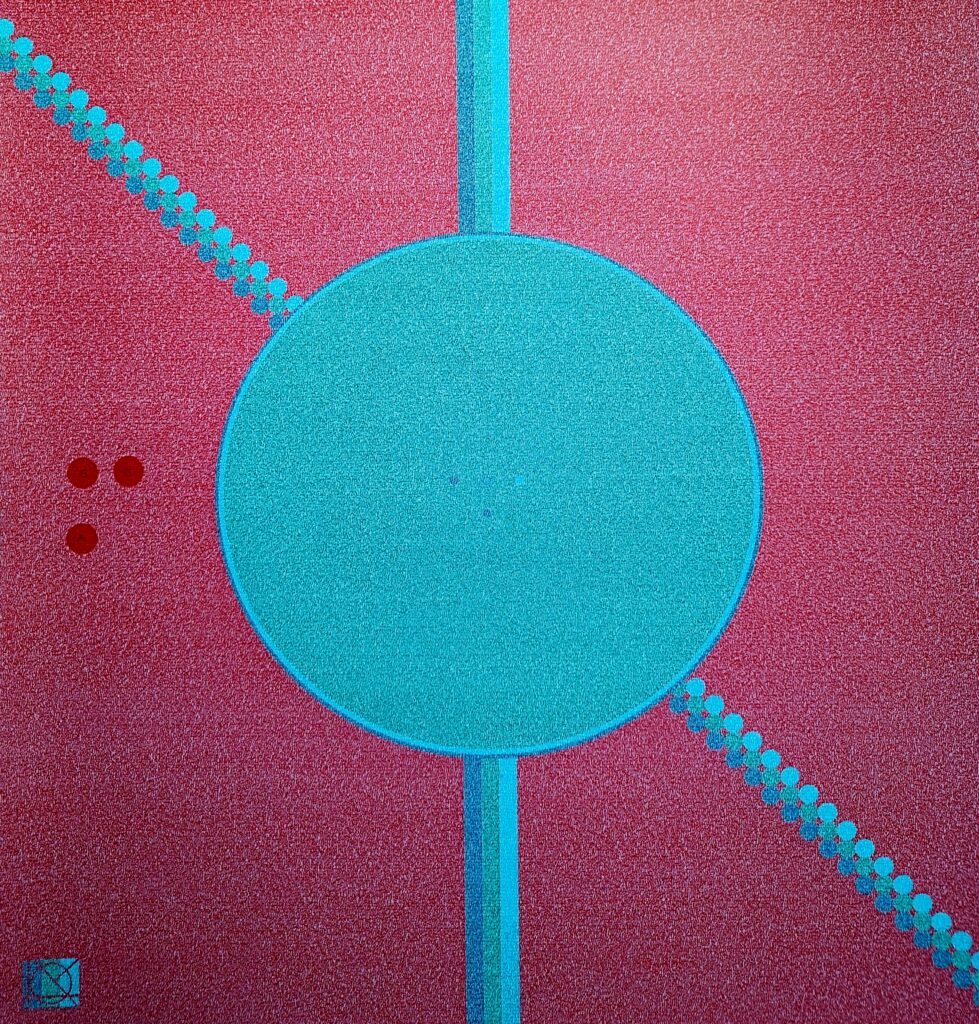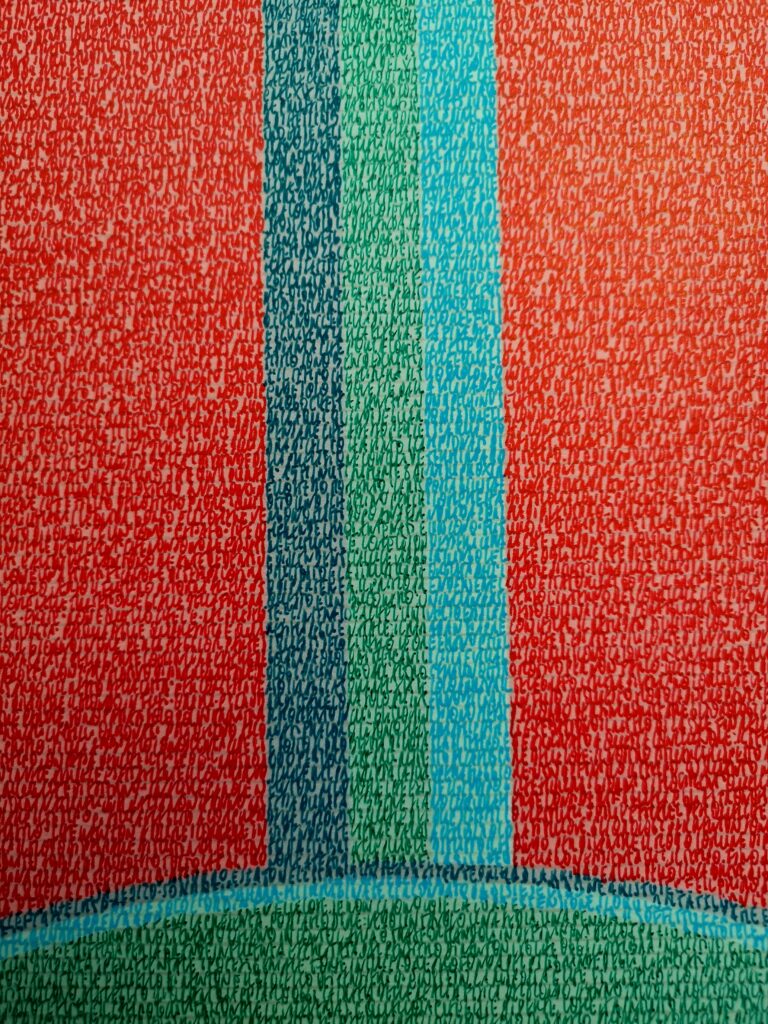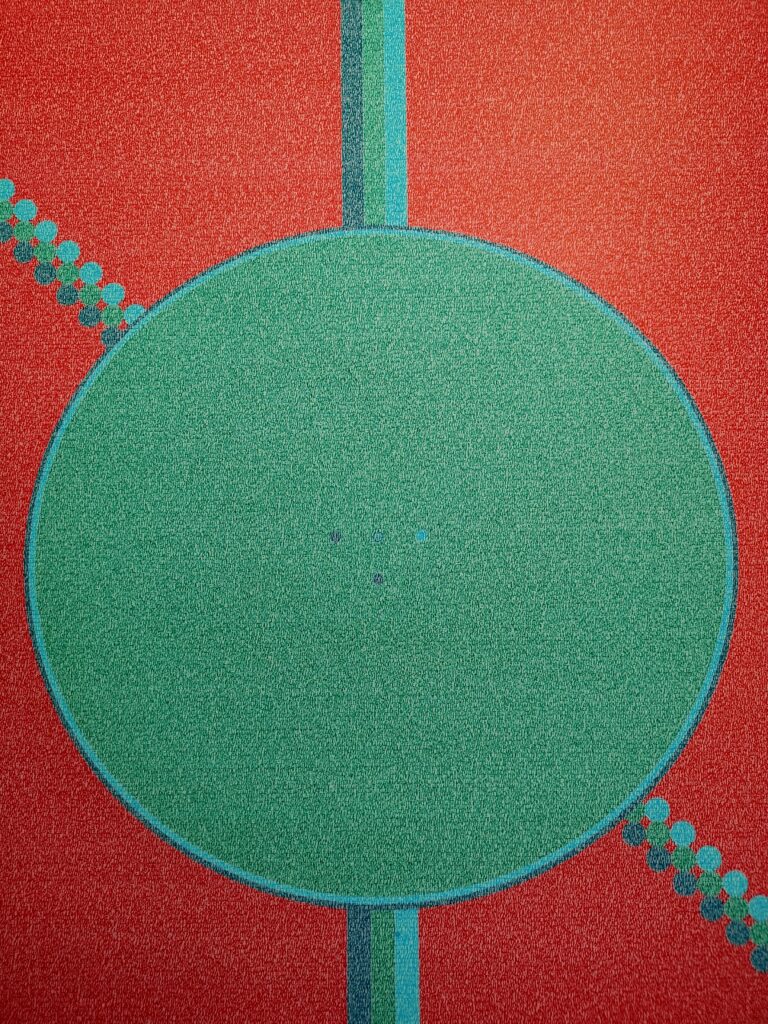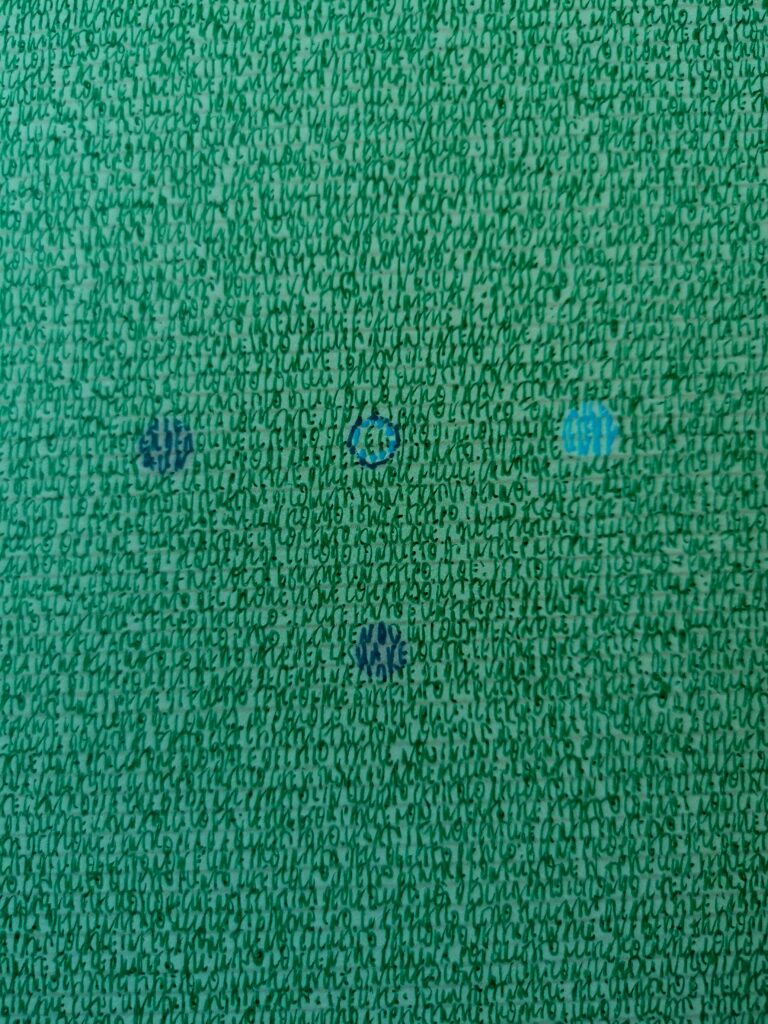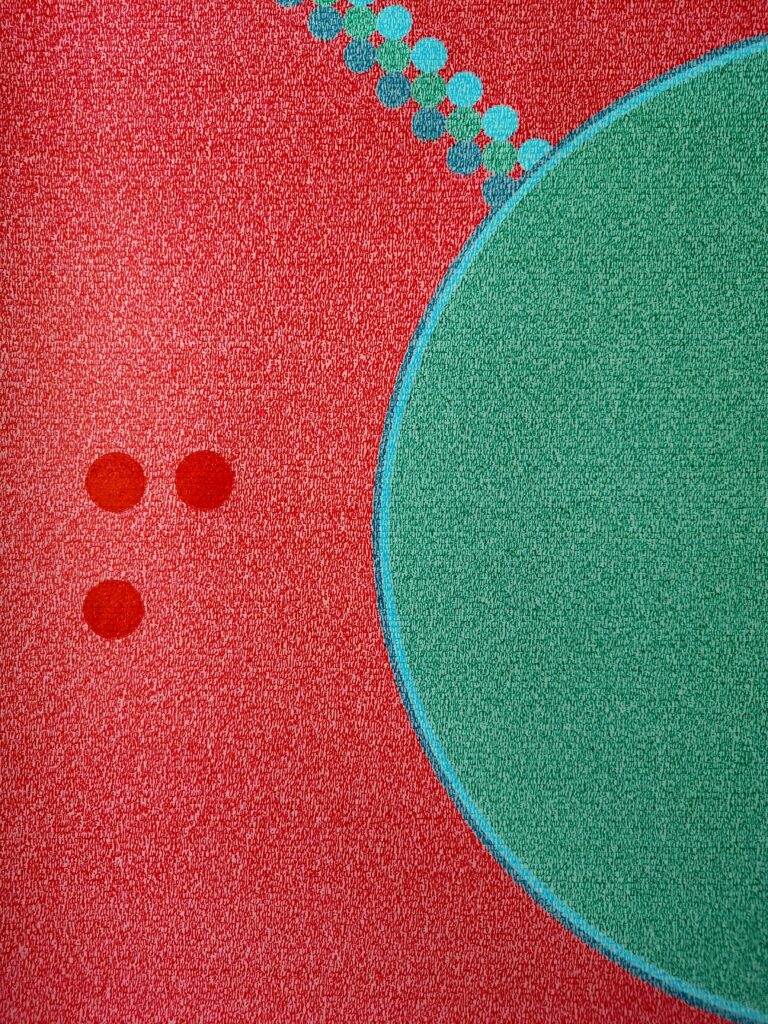THE FLOWING OF TIME – THE INSTANT
© Ivan Cangelosi, 2022
84 X 80 cm
Ink on paper
Technique – Handwriting of the book “The order of time” by Carlo Rovelli
The concept of “time” has always been subject of investigation in various fields: from philosophy to physics, from literature to art. In philosophy, first with Parmenides and then with Plato (chapter X of the Timaeus) the concept of time is faced for the first time in its complexity. Plato defines it as “the moving image of eternity”; Aristotle later, in the fourth book of “Physics”, will say that it is “a property of movement according to the before and after”, a distinction that implies, in the flowing of time, the introduction of intervals, of measurable instants. Therefore, if time is a “measure of movement”, we are obliged to have a measurer without which the concept of time would not exist.
The picture represented in this work is the figurative result of personal reflections on the concept of time and its flowing, starting from Aristotle’s (linear) conception of time.
The perception of the flowing of time hence occurs in a space in which something happens, in which there is movement, where there is a “before” and an “after”, change, transformation; all things that in order to be verified must necessarily be subjected to a condition: that of being observed, witnessed, measured. The concept of time and the existence of human being are therefore closely related.
Therefore, it is not the flowing of time that detects the change but the opposite: it is the change / renewal that determines the perception of the flowing of time.
THE INSTANT
The present is the spacetime dimension constantly perceived by the human being: it seems to consist of a succession of instants. The instant is that ideal point where past, present and future coincide. It is, in other words, the imaginary point at which the present (now) is about to instantly become past (before) and future (after), a formulation that highlights the fact that what matters and remains, what incessantly and instantly occurs, is the present. If this reasoning is pushed to its extreme consequences, an apparent paradox would find its logical foundation, namely that past and future, vanishing instantly, in other words never occur.
Hence, the thought that is the basis of the picture depicted in this work is the following:
In the linear flowing of time, when the past becomes the present, the present instantly becomes past and future. That is, when A becomes B, B instantly becomes A and C (which becomes B, which becomes A and C and so on).
This statement leads to the shaping of a triangle whose area (points B-C-A, see picture 1) represents the instant; it contains the three temporal dimensions, namely past, present and future. The flowing line of time thus determined, appears to be a diagonal, rightwards descending zigzag line (picture 2).
(Pict. 1)

(Pict. 2)

THE INSTANT AND THE UNFORESEEN
A second personal reflection leads to the idea that the present (B) is the result of what happened in the past (A) added to the unforeseen (X).
The unforeseen (or, in other words, the uncertain, the unknown, the “not yet occurred”) is a factor that conceptually belongs to the future. The unexpected therefore is equivalent to a moment, conceptually located in the future, which has its cause (causes) in the past (every event happens due to a factor that precedes it and that determines its occurrence), and that happens in a certain instant (present). The unforeseen, therefore, as well as the instant, by enclosing the three temporal components, ie past, present and future, would coincide precisely with the instant. It is therefore immanent, always present, and this would be equivalent to saying that the unforeseen happens in every instant, regardless of whether it produces visible and tangible consequences for the human being.
THE INSTANT CHANGE OF REALITY
In consideration of the previous reasoning, it would follow that: if the unforeseen, or the sudden change in a given situation, occurs at any moment, it follows that reality, by changing instantaneously, cannot be known. Therefore, it would not be possible to fix an instant “0” in order to be investigated and known, because that instant “0”, interrupting the flowing of time, that is the flowing of life, would simultaneously be equivalent to the beginning and the end of that flowing, that is to say, to its non-existence.


